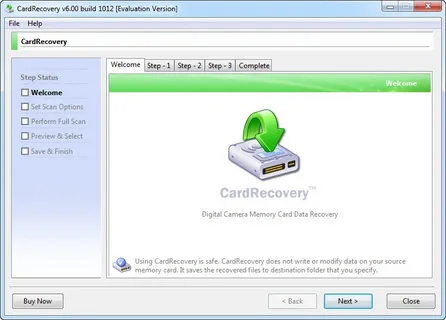Card recovery software free download full version with crack
In today’s digital age, losing important files from memory cards can be a frustrating experience. Card recovery software is designed to help users retrieve lost, deleted, or corrupted files from various types of storage devices, such as SD cards, USB drives, and hard drives. These tools are essential for photographers, videographers, and anyone who relies on digital storage, as they can recover valuable data quickly and efficiently. This article provides an in-depth look at card recovery software, highlighting its features, technical specifications, and how to effectively download and use it.
Features of Card Recovery Software
The primary features of card recovery software include:
- Deep Scan Capability: This feature allows the software to perform thorough scans of the storage device, ensuring that even deeply buried files can be retrieved. It can locate files that standard recovery processes might miss.
- File Preview: Before restoring files, users can preview them to ensure they are recovering the correct documents, images, or videos. This feature is particularly useful for verifying the integrity of files.
- Multiple File Format Support: Most card recovery software supports a variety of file formats, including images (JPEG, PNG), videos (MP4, AVI), and documents (DOC, PDF). This versatility makes it suitable for various recovery scenarios.
- User-Friendly Interface: The software typically features an intuitive interface that guides users through the recovery process, making it accessible even for those with limited technical expertise.
These features not only enhance the recovery process but also ensure that users can retrieve their files with minimal hassle.
Technical Specifications
- Version: 4.0
- Interface Language: English
- Designed By: RecoveryTools
- Type of Software: Data Recovery
- Audio Language: N/A
- Uploader/Repacker Group: RecoveryTeam
- File Name: CardRecovery_v4.0.exe
- Download Size: 25 MB
System Requirements
- Minimum:
- OS: Windows 7 and above
- RAM: 1 GB
- Hard Disk Space: 100 MB free space
- Recommended:
- OS: Windows 10 or later
- RAM: 2 GB or more
- Hard Disk Space: 200 MB free space
Troubleshooting Common Issues
When downloading and installing card recovery software, users may encounter common issues such as installation errors or software crashes. To troubleshoot these problems:
- Check System Requirements: Ensure that your PC meets the minimum requirements for the software.
- Disable Antivirus: Sometimes, antivirus software may interfere with the installation. Temporarily disable it while installing the recovery software.
- Use a Stable Internet Connection: A poor connection can lead to incomplete downloads. Make sure your internet connection is stable before proceeding.
How to Download and Install the Software
To download the card recovery software, click on the download button provided on the website. After downloading, follow these steps:
- Locate the downloaded file (e.g., CardRecovery_v4.0.exe) in your downloads folder.
- Right-click the file and select “Run as administrator” to initiate the installation.
- Follow the on-screen prompts to complete the installation process.
How to Start and Use the Software
After installation, follow these steps to use the card recovery software:
- Launch the software from your desktop or start menu.
- Connect the memory card or storage device from which you want to recover files.
- Select the type of scan you wish to perform (quick or deep scan).
- Once the scan is complete, preview the files and select those you wish to recover.
- Click the “Recover” button and choose a location to save the recovered files.
For more information on card recovery software and other resources, you can visit the following websites:
- Frezsa: Frezsa
- Get Into PC: Get Into PC
- Ocean of Games: Ocean of Games
- IPC Games: IPC Games
- Get Into PC: Get Into PC
- AACPI: AACPI
- Deffrent: Deffrent
- Mrafb: Mrafb
Each site offers unique resources and insights, so feel free to explore them to find the information you need.

Leave a Reply